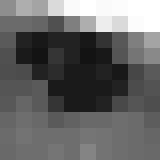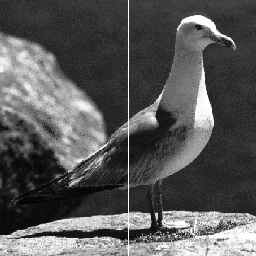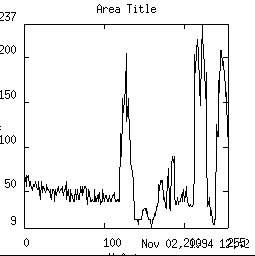
Original image
Sometimes a single display of an image is not enough to show its details. There are several complementary tools that allow exploration of the image data.
Below is a graphical representation of the image of a gull using the Display operator available in Khoros.
An image normally has a large number of pixels, that is, it is a large matrix. Sometimes one is only interested in a particular section of the image known as region of interest (ROI). Depicted below is a small image of size 10x10 extracted from around the eye of the seagull.

Extracted 10x10 region around the seagull's eye
Clearly, a 10x10 image is very small to make good observations. The user can zoom or "expand" the region for better visualization.

Same image, but zoomed by a factor of 10
The user can also display or "print" the values of the 10x10 ROI image:
142 174 164 218 250 255 250 252 255 255 107 107 102 80 127 174 237 218 252 255 90 34 24 34 34 24 51 88 127 164 80 26 19 53 34 19 24 85 117 137 78 76 34 44 26 26 34 24 71 90 85 85 90 26 26 26 26 34 76 83 88 102 90 53 26 26 34 73 85 78 102 110 105 90 98 105 105 110 107 93 107 115 110 110 110 117 115 110 107 102 105 110 110 117 110 132 115 110 107 105
The user can also visualize this small image as a surface plot where the pixel intensity values are the height information. This surface can be seen below

Surface image
The user may want to plot the intensity profile of a central vertical line of the original image. The extracted line can be seen as a 1D signal. We normally visualize a 1D signal by plotting it. In the plot below we can observe the variation of the pixel values along that vertical line. Explain the three peaks in this 1D intensity profile, i. e., what do they represent in the gull image?
 ..
..

Original image with a vertical line. Intensity profile of the depicted vertical line.